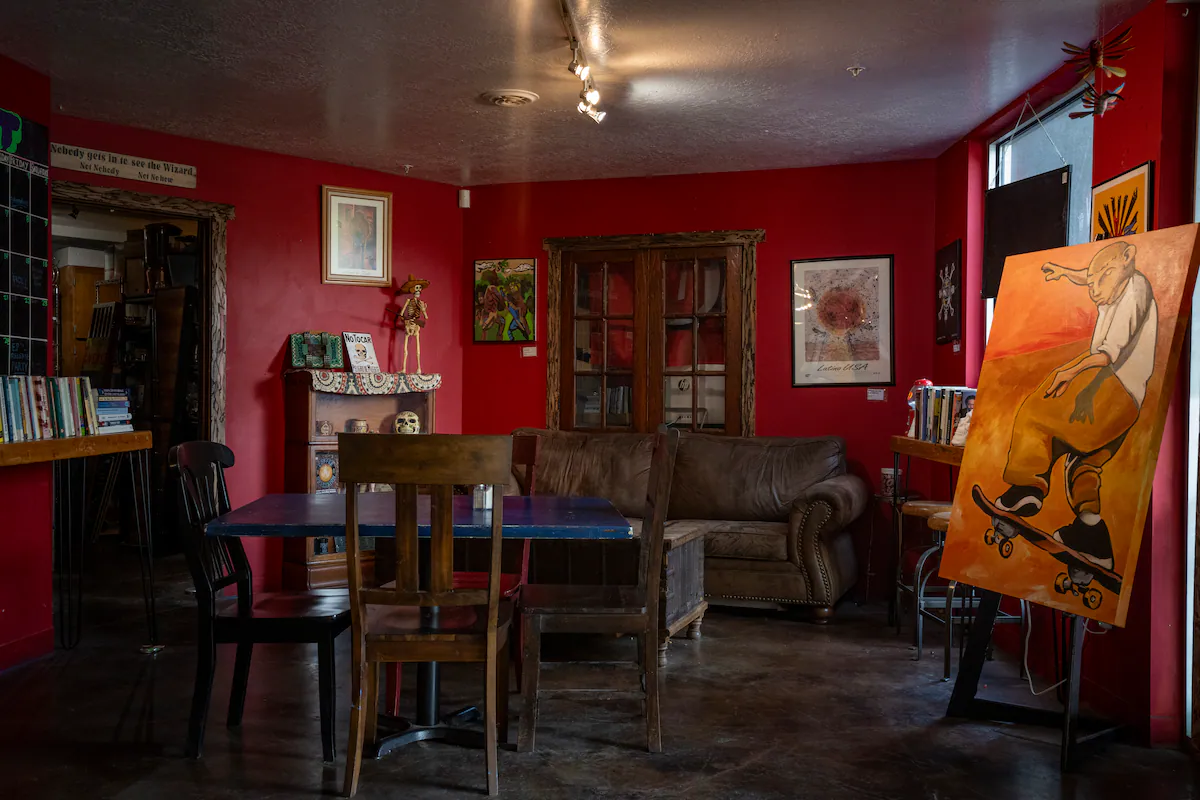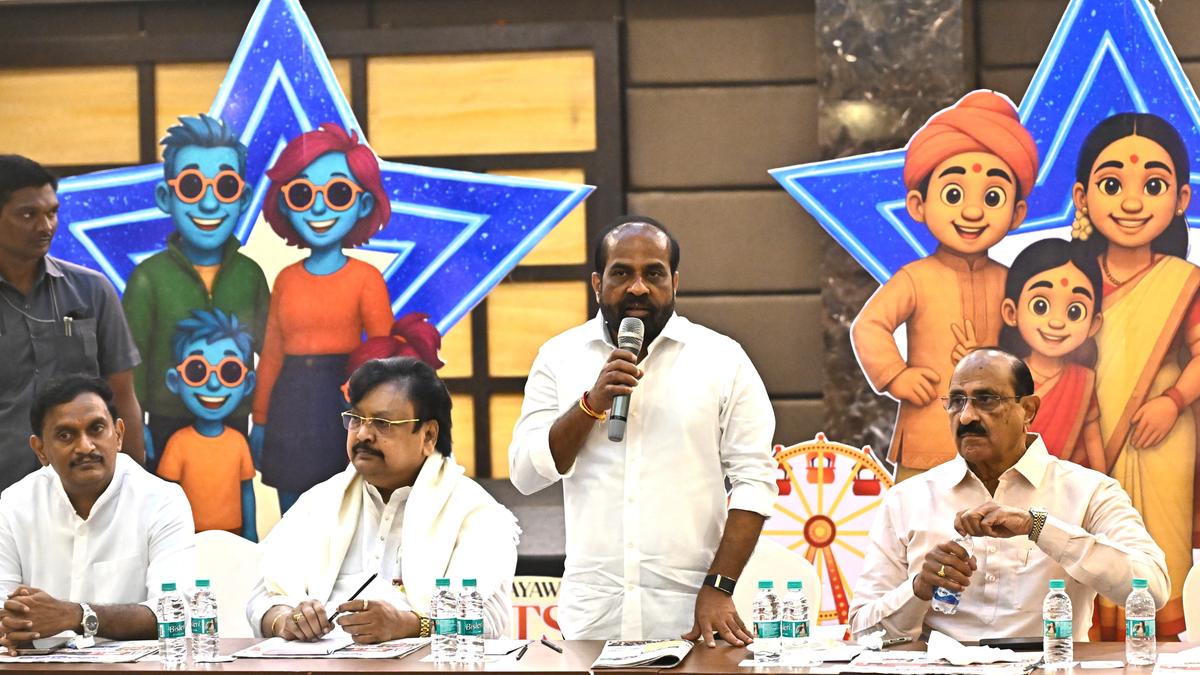
Stepping into Mestizo Coffeehouse is like entering a small-scale worldwide art museum.
Works from cultures across the globe reside inside on the colorful walls, in display cases and on shelves. Pieces from India, Egypt and Thailand. Art crafted by creators of Mexican, Guatemalan and Vietnamese heritage. Glance at one wall and you visit Cuba, at another and you’re transported into an Indigenous perspective.
For more than 15 years, the coffee shop at 631 North Temple has been a launching pad for artists on Salt Lake City’s west side and beyond. But Mestizo closed its doors for good Saturday, leaving some creators to worry where emerging artists may get their start.
“It is unique and not easily replaced,” poet and writer Willy Palomo said. “To offer precisely what Mestizo offered in terms of a community space, a place for these artists to be able to be recognized in their own communities. I don’t see that existing right now.”
The coffee shop’s La Galeria de Mestizo has not only let scores of Utah artists leave their mark, but it has also left its mark on them. Double doors lead into the space that has housed at least 180 artists’ works over the years, according to Dave Galvan, the co-owner of Mestizo and curator of the gallery.
The gallery itself is minimal — white walls, black leather chairs, a piano in one corner and furniture where some pieces rest. Really, it’s the art that brings the place to life.
“The gallery part of the coffee shop,” Galvan said, “the art component of it, was [about] people.”
He recalls exhibits from the shop’s history and the art that has opened his eyes to different lives and perspectives. Among them, a photo exhibit that showed toilets from across Europe, created by an artist who dealt with an affliction that required him to use the restroom often. Another on tattoos before they were so common and widely embraced.
He remembers when five Muslim women in hijabs came into the shop to look at an exhibition of art from their religion. “You don’t see that in Utah,” Galvan said.
Mestizo’s gallery was created for those who weren’t used to seeing themselves or their cultures represented in such spaces, he said.
The shop’s beginnings
Mestizo opened in 2008 — a dream of writer Terry Hurst and artist Ruby Chacón, along with help from Dan Stanger at Bridge Investment Group, community resident Mary Ann Villarreal and NeighborWorks Salt Lake.
The idea of finding a place for Chicano and Latino artists of all trades to converse and be themselves came from a tragedy. When Chacón’s 3-year-old nephew Orlando was murdered in 1996, Chacón said she felt that the news media never humanized him and that the coverage perpetuated stereotypes.
Hurst and Chacón, who were previously married, were also seeing art and spaces in California and New Mexico dedicated to Chicano painters at the time. This led them to want to recreate a similar space in Utah.
“We wanted to plant it in kind of a Chicano identity,” Hurst said, “but also welcome other people who didn’t have a place or a voice, who were looking for a place to express their voice.”
Hurst said he and Chacón hoped their idea would help “spawn seeds and grow in other places” so others could “add their color to the tapestry that we were painting.”
A place to simply be
Tania Zapata, an artist who has had her work shown in Mestizo’s coffeehouse gallery, said when she reached out to Galvan about a potential exhibit, he “responded right away that he was willing to do a show for me and wasn’t going to charge me any fees or anything.”
Zapata is a watercolor painter who focuses on Mexican art so she can share her “traditions and culture” with others. One thing about Mestizo that she admired in particular is its lack of fees for artists and patrons. It’s why she stopped showing her artwork at other Utah events, she said.
“I feel like the whole purpose of showing my art is to be an ambassador for Mexican culture,” Zapata said. “In some places like West Valley and stuff, there’s a lot of Latino community, but they’re not in the position to be paying for [admission] fees for the whole entire family.”
Galvan said the coffee shop never charged anyone to come to the gallery, and oftentimes, the gallery “reached into their own pocket” to help fund shows.
The loss of Mestizo and its gallery — “a place for the community to gather, not so much like a business” as Zapata puts it — makes Zapata worry for emerging artists and creators who don’t have connections or money for fees.
Mestizo, she said, became a place where Latino artists could simply just be.
‘An anchor as a community space’
Palomo, a member of the Plumas Colectiva, a group of eight Latina and Latino poets, writers and digital artists in the Salt Lake Valley, shares Zapata’s concern.
Palomo was raised in South Jordan but now lives in Chicago, and said Mestizo is the “first place where [I] had Latino community around me.”
“I was in a space where it was predominantly Latino,” they said, “and this was important for the development of my own writing [and] voice.”
The culture and community of Mestizo became a “formative” part of Palomo’s artistic journey, especially as a poet. One thing they remember from the coffeehouse is its authentic Día de los Muertos celebrations.
“It’s a place where I could go and be in that culture, and not like a museumified version of it, because it was a coffee shop,” they said. “It’s also the sort of place where you would go on dates and fall in love and study … it was an anchor as a community space.”
And it’s community that cemented every corner of the coffeehouse. A bulletin board with all types of flyers for resources. Notebooks scattered around where anyone could leave a message. A guestbook in the gallery, where anyone could sign in.
If Palomo had to describe Mestizo in three words: it would be “cultura, comunidad and resistencia.”
Now artists will have to find those things elsewhere.



